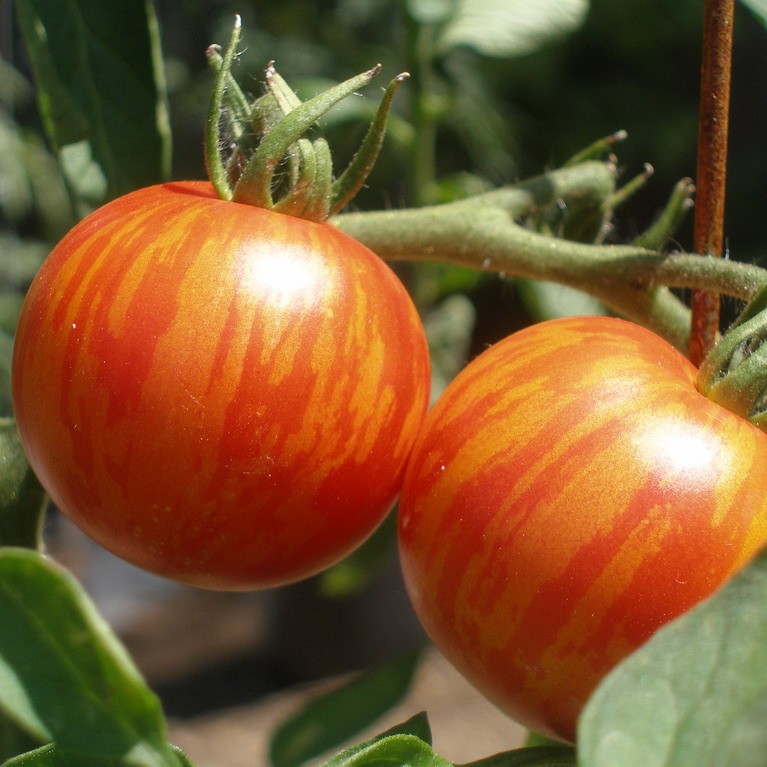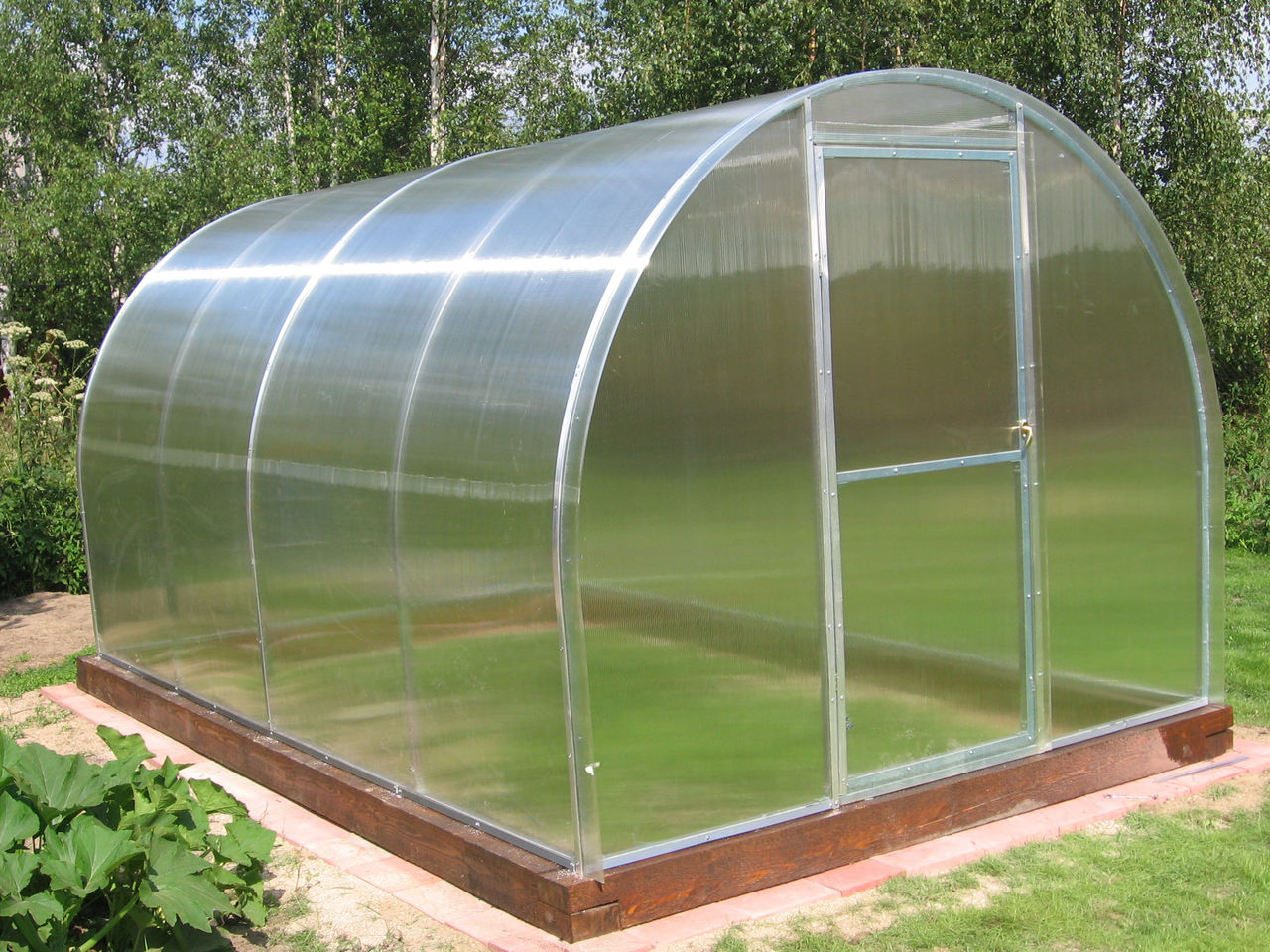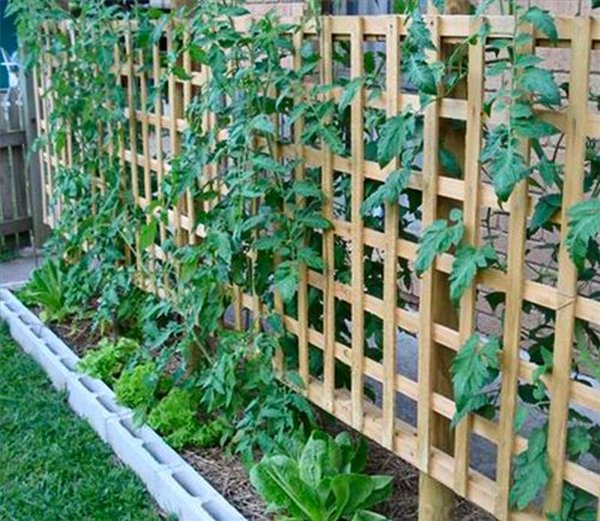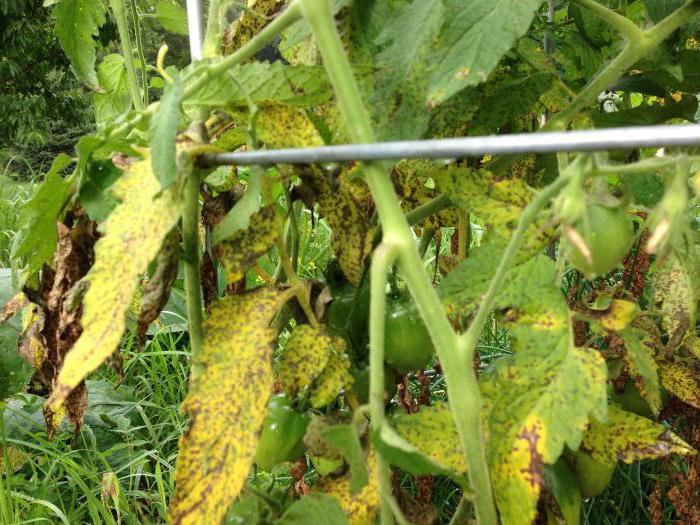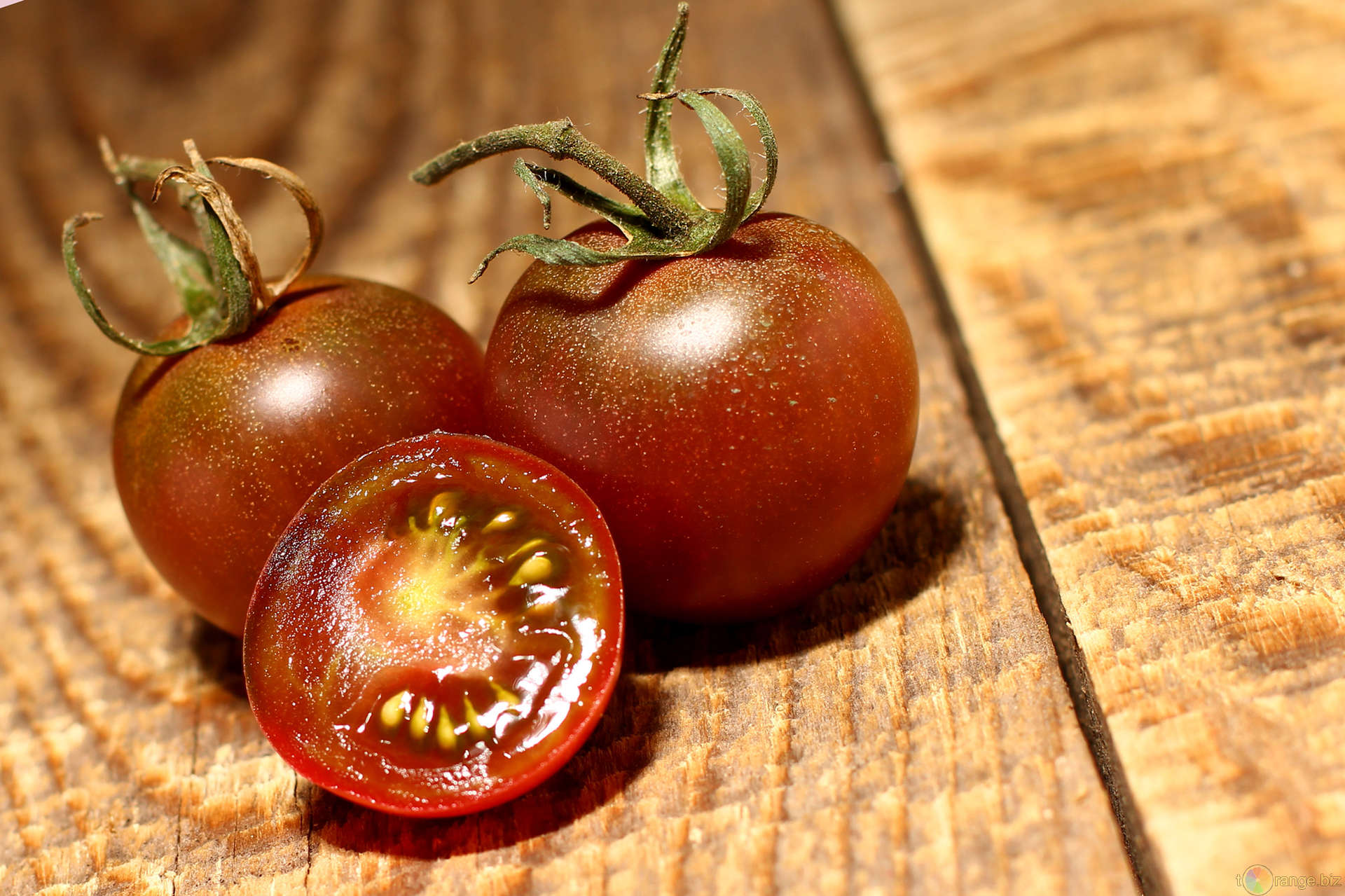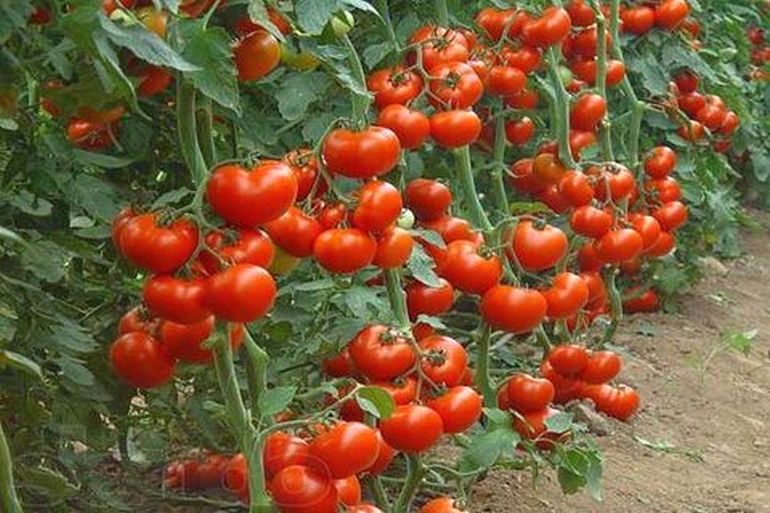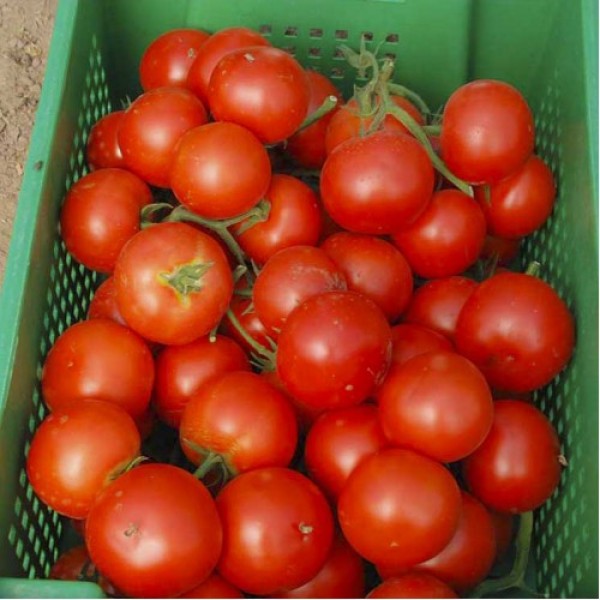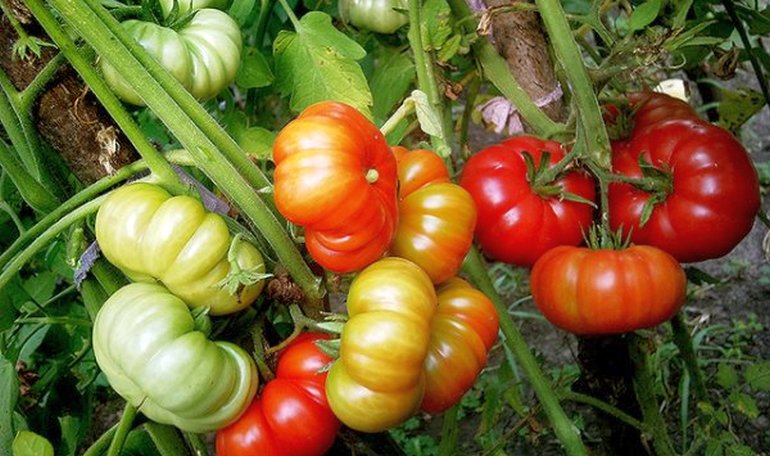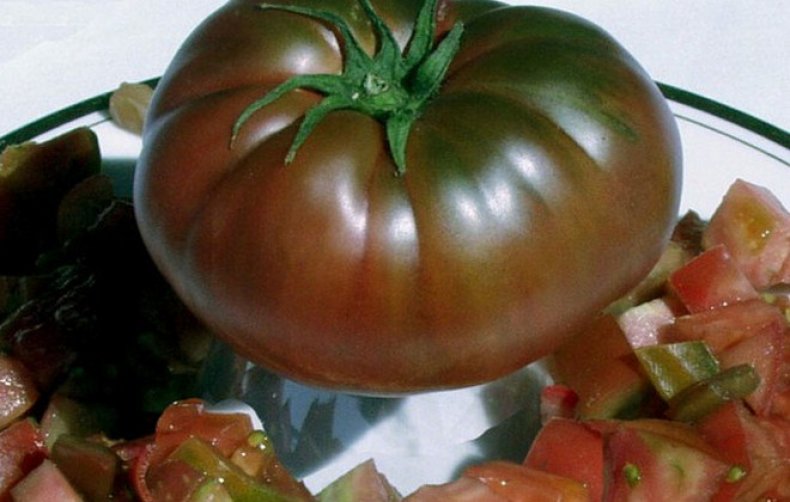Content:
Among the many existing varieties of tomatoes, the Amur tiger is considered one of the most exotic and unusual, along with such varieties as the Siberian tiger tomato, Wild tiger, Yellow dragon and others. The originator of this variety, included in the register in 2015, is the agrofirm "Aelita". The cultivation of this variety is allowed in almost all regions of our country. At the same time, the cultivation method can be any: both in the open field and in greenhouse conditions. One of the advantages of this variety is its high yield. Among other varieties, tomatoes stand out for their variegated "tiger" color, which is present only in some closely related varieties of tomatoes, such as the Pink Siberian Tiger.
Features:
The Amur tiger tomato belongs to the category of mid-ripening tall tomatoes. From the moment of emergence to the beginning of fruit ripening, it takes from 108 to 112 days. The stems of the plant are highly leafy, the bushes are powerful, dense, their height reaches 0.8-1.2 meters. The leaves are dark green in color, medium in size. The type of inflorescence is intermediate (branches 1-2 times). Several fruits are located on one inflorescence at the same time (8-12 pieces each). Fruit set is high.
As for the Amur tiger tomato, its characteristics and descriptions of the variety, they boil down to the following parameters. The fruits of the plant have a flat-round shape with weak ribs. During the ripening process, the color of the pale green fruit gradually turns brownish red. Unripe tomatoes have a dark green spot at the very base of the fruit. The thin skin of a ripe tomato is decorated with bright yellow stripes. The density of the pulp is average, the consistency is juicy, fleshy. Inside the fruit, there are more than 6 seed chambers with a large number of seeds. The weight of one fruit varies from 30 to 80 g. Fresh harvested crop can be stored for a short time. Tomato yield, subject to agricultural technology, is up to 3 kg per plant.
This variety is highly resistant to viral diseases. In particular, the tomato is not susceptible to Alternaria (dry spotting, the appearance of depressed spots with a black bloom) and the tobacco mosaic virus (yellow mottling on the leaves, deformation, thinning of the leaves). During the cold season, the plant may undergo late blight. To avoid infections and related diseases, the bushes should be treated with fugicides until the fruit ripens.
Food consumption
Tomatoes of this variety are quite tasty. They are great for consumption, both fresh and processed. Preservation of the product is also allowed, but it is rarely used due to the fact that the peel of these tomatoes is very thin. Tomatoes are delicious when salted, and are also great for processing into tomato juice or sauces. For this, it is better to use very ripe, soft fruits.
Growing
If tomatoes are supposed to be grown in an area with a warm climate, then it is better to do this outdoors. For the middle zone and Siberian regions, greenhouse conditions will be the most suitable option.
Planting seeds should be done 1.5 months before moving the seedlings to the greenhouse. Sowing is carried out in early April, if the tomato is planned to be grown in the open field, or at the end of March, if further planting in the greenhouse is expected. Immediately before sowing, the substrate is moistened.When 2-3 true leaves appear, they must make a dive at a distance of 7-10 cm from each other.
You do not need to fertilize the seedlings. If there is a lack of sunlight on the north side, a phytolamp may be needed. The duration of daylight hours for the normal growth of tomatoes should be at least 15 hours. After the soil warms up to + 15 ° C, tomatoes can be planted in the ground. This is usually done in early June, after the danger of frost has passed. Plants are placed in rows. The distance between them should be 30-40 cm. The distance between the rows is 30-50 cm. A week later, the tomatoes are fed with nitrogen-containing mixtures. During flowering and ripening of fruits, plants are fertilized with potassium and phosphorus.
It is recommended that you add some humus to each hole before planting your seedlings. If tomatoes are grown in a greenhouse, the shrub must be combined into one or two stems. It is also very important to remove side shoots, otherwise part of the crop will be spoiled. Before the end of the growing season, the growth point is plucked (the top of the main shoot is removed). Thanks to these actions, the number of fruits will significantly increase, and the ripening time of the fruits will be reduced. The bush is tied up without fail.
Why tie up tomatoes
If this is not done, the crop can be severely spoiled:
- being in damp ground, tomatoes are likely to rot;
- fruits that come into contact with the ground can become prey for slugs and other pests;
- if the plant is not strengthened, the stem under the weight of ripening fruits will not withstand and break.
It is convenient to tie the Tiger tomato to the trellis. This method consists in the fact that high (from one and a half meters) stable stakes are driven into the ground at different ends of the beds. A strong trellis is installed between them, to which the plants are tied.
It should be borne in mind that the previous place for a new planting can be used only after 2-3 years. In no case should fresh manure be used as fertilizer. Otherwise, the active growth of stepchildren will begin, the leaves will become large, and the stems are much thicker, while the fruits will ripen more slowly and set worse.
Care
It is believed that it is possible to increase yields by removing leaves, but this should not be abused, otherwise the effect will be completely opposite. Due to the leaves, the fruits are saturated with vitamins and other useful substances. Thus, only diseased, low-quality leaves, as well as those that are under the stems with ripe fruits, need to be broken off. Leaves are harvested gradually, 3-4 per week.
To make the setting process more active, it is recommended to spray the tomatoes with a boric acid solution.
Do not water the plant often. One high-quality watering is enough 2 times a week. The soil must be loosened, the tomatoes are spud.
If tomatoes are grown in greenhouse conditions, the air temperature should be no higher than 32 ° C. Exceeding this norm will lead to wilting of plants. It is necessary to constantly monitor the temperature indicators and ventilate the room as needed.
Advantages and disadvantages of the variety
Among the positive characteristics of the Amur tiger tomato are:
- resistance to various diseases;
- high productivity;
- short ripening period;
- good transportability;
- beautiful appearance.
The disadvantages of this variety of tomatoes include:
- low frost resistance;
- small fruit size;
- not the best taste (as shown by consumer reviews).
Thus, the Amur tiger tomato is perfect for growing, both in the open field and in the greenhouse. The variety has its own disadvantages and advantages, it is quite demanding in matters of care and growing rules, it has an unusual appearance and high yield.
